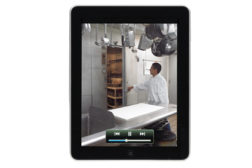Articles by Derek Rice
New technologies and integration with other systems are bringing entry controls and intercoms into the 21st century.
Read More
Where’s the Gain in Security Cloud Computing?
As cloud services gain traction and can exchange data freely, security professionals predict the industry will have access to better products, lower costs and greater margins.
September 6, 2012
From There to Here
Understanding the speed, distance, and bandwidth requirements of today’s sophisticated security networks requires a leap in understanding of complex integration of hardware, firmware and software.
August 16, 2012
Mobile Video Viewing: Why It’s Becoming Indispensible
There has been an explosion in the number of manufacturers and others who offer smartphone apps specifically for viewing video systems.
July 23, 2012
Monitored Video: The Central Station Perspective On Business Practices
As video monitoring and hosting become more desirable as a business offering, central stations share ideas for the operational details that can make it successful and profitable.
June 18, 2012
Security Industry’s ‘Green Day’ Is Coming
As larger security projects evolve into integrated systems, the pressure to deliver green solutions will increase, experts say.
April 25, 2012
Be in the forefront of security intelligence when you receive SDM.
Join over 10,000+ professionals when you subscribe today.
SIGN UP TODAY!Copyright ©2025. All Rights Reserved BNP Media.
Design, CMS, Hosting & Web Development :: ePublishing








